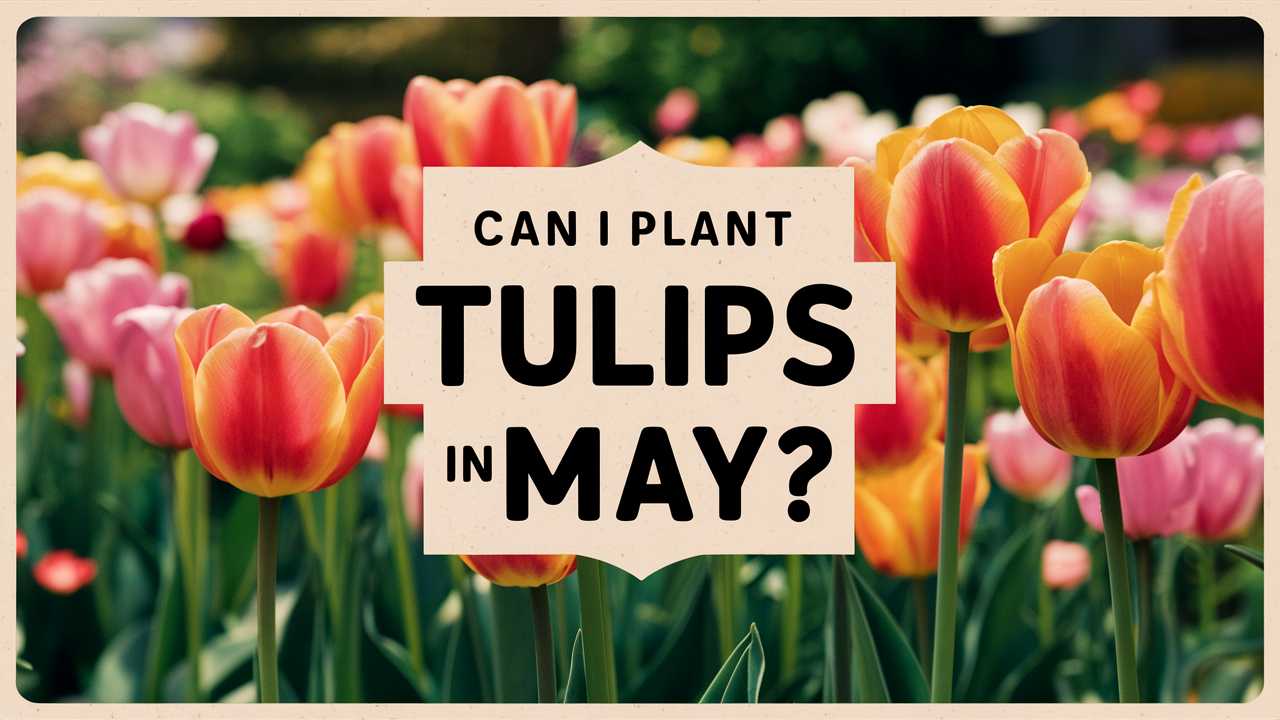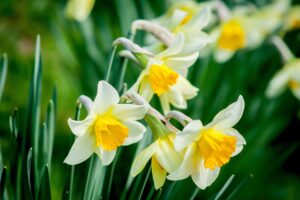In this guide, we’ll explore the nuances of tulip planting times, the ideal growing conditions, considerations for May planting, and various tips to successfully grow these beautiful flowers.
The Ideal Tulip Planting Season

Traditionally, tulips are best planted in the fall, specifically from late September to early November. This timeframe allows the bulbs to establish roots before the onset of winter. Planting at this time ensures that the bulbs can survive the cold months and emerge in early spring. This preference is due to several factors:
Cold Stratification: Tulip bulbs require exposure to cold temperatures to trigger their growth cycle. This chilling period is essential for the biochemical process that prepares the bulbs to sprout.
Root Development: Planting in fall gives tulips time to develop their root systems before winter. Once the warmth of spring arrives, they can push through the soil and bloom without delay.
Natural Growth Rhythm: Tulips naturally follow seasonal cycles. Planting them in accordance with their biological rhythm promotes better blooms.
Planting Tulips in May: An Overview

Now, turning to the question of planting tulips in May, the short answer is: it’s generally not recommended. Here’s why:
Timing of Growth: By May, tulips are typically already in bloom or past their prime, depending on the specific variety and climate. Planting them at this time means you may not get the thrilling display of flowers typically associated with tulips.
Bulb Health: If you plant tulip bulbs in May, they will not have had the required chilling period to initiate their growth cycle. As a result, they may not sprout at all, or if they do, they may produce weak plants with fewer flowers.
Favorable Conditions: The warmer temperatures of May do not provide an optimal environment for new bulb growth. Tulips thrive when the soil is cooler, and planting in warmer weather can expose the bulbs to stress, leading to poor growth or even death.
Contextualizing May Planting: Exceptions to Consider
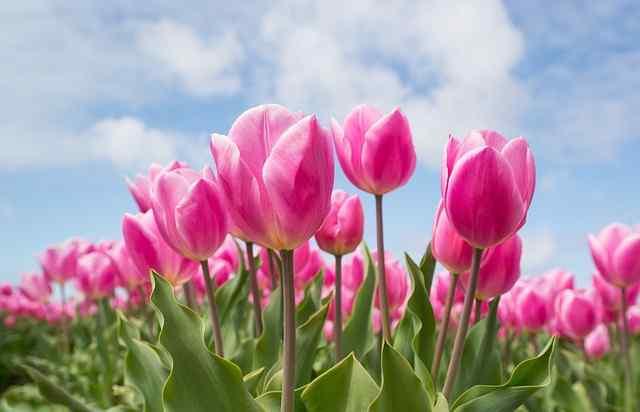
While May may not be the ideal time for standard tulip planting, there are exceptions and alternative considerations worth exploring.
Late-Blooming Varieties: Depending on your region, some late-blooming tulip varieties may still be available for planting in early May. These varieties can sometimes be planted in spring for summer display, although they may need to be given additional care.
Container Planting: If you have already purchased tulip bulbs in May, consider planting them in pots. Containers can be controlled better in terms of temperature and moisture, which may allow for some success despite less-than-ideal planting times.
Exotic or Hybrid Varieties: Certain hybrids and specialty tulips might have different requirements. Always check the packaging or consult local gardening experts for peculiarities related to specific bulb varieties you may want to plant in May.
Assessing Your Climate
Another important factor is your local climate. The suitability of planting tulips in May may vary depending on your gardening zone.
Warmer Climates: In regions where spring comes early and summer is very hot, you might see tulips blooming as early as March or April. Here, the window for planting in the fall is crucially limited, but May planting risks compromising the ability to grow a healthy bulb.
Cooler Climates: If you live in a climate with cooler springs, late May may still allow for the establishment of new bulbs, but again, this is not the preferred method and should be approached with caution.
Preparing for Tulip Planting
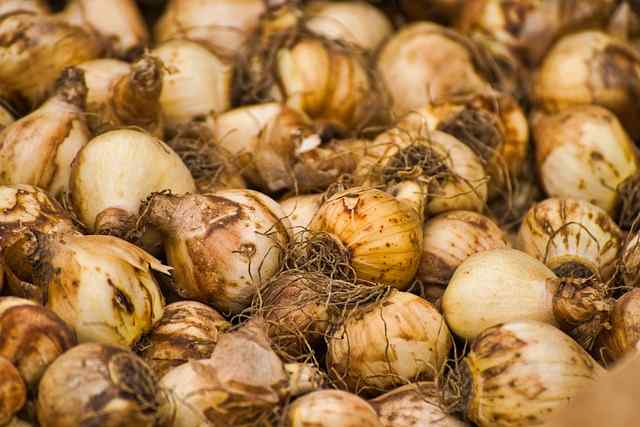
Should you decide to move forward with tulip planting, whether in May or any other time, preparation is vital for ensuring vibrant flowers down the line. Proper preparation involves:
Selecting the Right Bulbs
Always choose healthy, firm bulbs that are free from mold or rot. The size of the bulb can also influence the resulting flower; larger bulbs generally produce stronger plants with larger blooms.
Site Selection and Soil Quality
Tulips thrive in well-draining soil that retains some moisture but is not overly saturated. Here are some tips for site selection:
Sunlight: Tulips prefer full to partial sun. Select a site that receives at least six hours of sunlight each day.
Soil pH: Aim for a slightly acidic to neutral pH (around 6.0 to 7.0). You can amend the soil with organic material such as compost to enhance its properties.
Drainage: Ensure the site does not retain excessive moisture. This can lead to bulb rot. If the ground is too heavy or clay-heavy, consider building raised beds for better drainage.
Timing of Planting
When planting tulips, whether you’re contemplating a May planting or considering a fall planting for the next season, be mindful of the timing. Remember to consider:
Soil Temperature: The optimal soil temperature for planting tulip bulbs is around 50°F (10°C). Use a soil thermometer to check before planting.
Watering: Whether planting in spring or fall, lightly watering after planting can help settle the soil. However, do not overwater, as excess moisture can encourage bulb rot.
Care After Planting
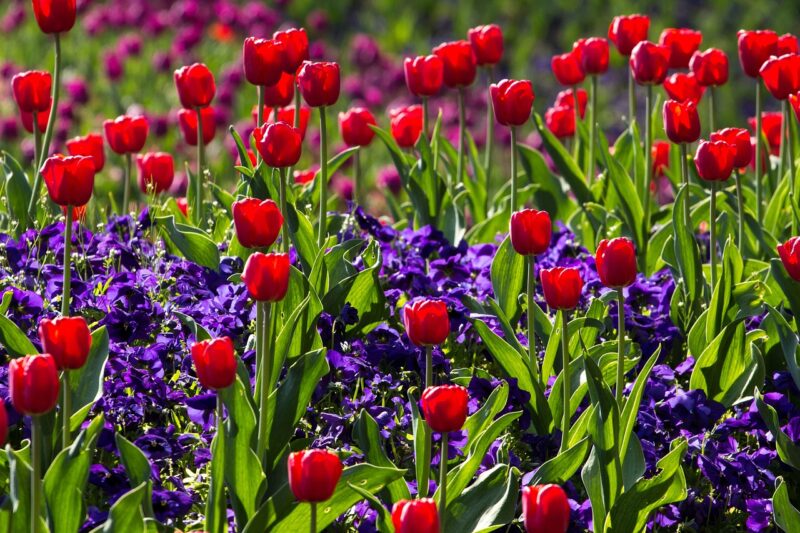
Caring for tulips post-planting is critical to ensuring healthy blooms. Here are several steps to maintain your tulips:
Watering Schedule: Water newly planted tulips regularly to maintain moisture, especially in warm periods. However, be cautious with watering to avoid saturating the soil.
Adding Mulch: Applying organic mulch can help moderate soil temperature and maintain moisture. Additionally, it can protect the bulbs from sudden temperature swings.
Fertilization: Once the tulips begin to sprout, consider using a low-nitrogen fertilizer to support growth. Follow the package instructions for food application rates.
Deadheading: Once the tulips bloom, deadheading spent flowers can encourage healthier foliage growth.
Post-Bloom Care: Allow the foliage to remain until it turns yellow and dies back naturally. This process allows the leaves to photosynthesize and energize the bulb for the next year’s blooms.
Conclusion: Timing is Everything
In summary, while it may technically be possible to plant tulips in May, it’s not advisable for most gardeners, especially those seeking vibrant blooms that are characteristic of these stunning flowers. Understanding tulips’ growing conditions, their seasonal needs, and climate adaptability is key to success in gardening.


